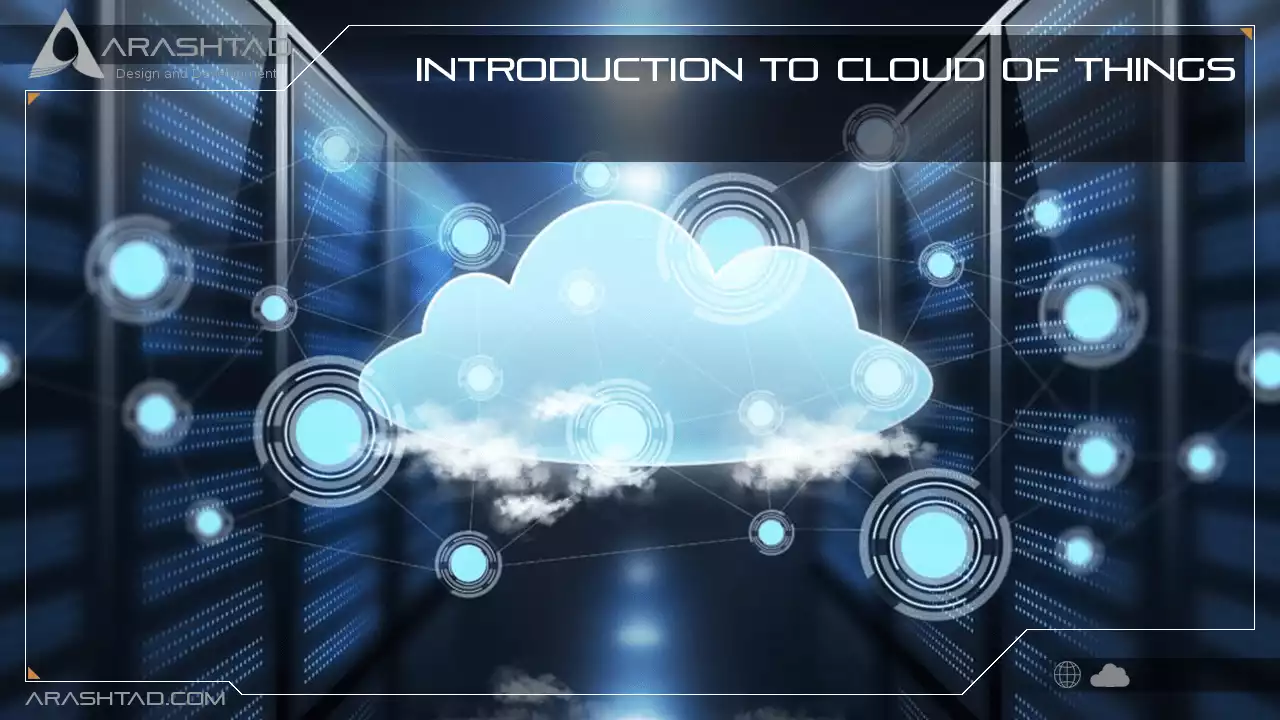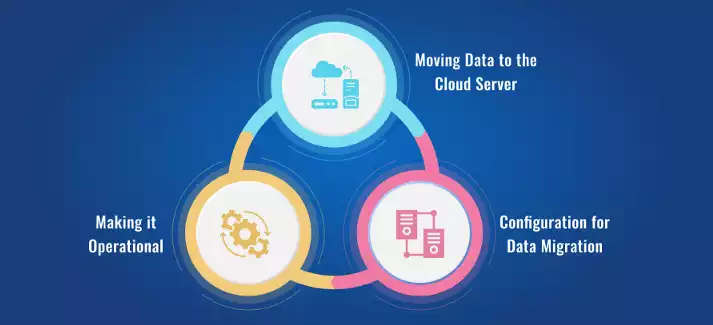Introduction to Cloud of Things
The Cloud of Things (CoT) combines the Internet of Things with Cloud Computing. The Cloud of Things is a cloud-based IoT application platform that permits remote monitoring, management, and control of IoT-enabled devices. Cloud computing can help boost IoT adoption and overcome IoT challenges. Hence, cloud technology and the Internet of Things have been integrated. This article discusses the Cloud of Things, the Cloud of Things architecture, the use cases, and the challenges associated with it.
What is a Cloud of Things?
Using IoT technology with cloud computing creates a Cloud of Things, a technology that enables enhanced resource utilization, eliminates costs, and improves customer service. On the other hand, cloud computing enhances collaboration, makes business more flexible, and reduces costs. Cloud of Things (CoT) brings enormous benefits to people, processes, and systems when these technologies come together. Cloud-based IoT platforms streamline data collection, analysis, transmission, and storage of IoT-enabled devices, allowing businesses to access, monitor, and control them. As IoT devices generate increasing data, the need for an advanced solution to store and analyze it without problems is growing. CoT combines cloud computing with IoT for improved data processing and process efficiency.The architecture of Cloud of Things
According to the CoT, smart services are the next generation of IoT applications. A large amount of data generated by IoT devices is processed and analyzed by the Cloud to produce essential information for users. Those data are highly sensitive information used by many smart services and/or applications. It is necessary to strengthen the existing cloud architecture to efficiently manage large amounts of data.With regard to energy consumption, security, privacy, and end-to-end delays, this enhancement is crucial for IoT-based real-time services. Cloud architectures are migrating towards distributed architectures closer to the network edge. Cloudlets, micro-clouds, and fog nodes are examples of distributed architectures that overcome these two last problems. In this distributed architecture, CoT networks can benefit from many features. Multi-device CoT ecosystems are described as tiered architectures with multiple devices connected. Various and different networked environments can interconnect these objects. It functions as a plan and describes the components of the technology.
How to Implement CoT Flawlessly
In order for CoT to be implemented flawlessly, there are three basic steps:1- Using a cloud server to move data
Data migration to the cloud might sound like a fairly straightforward and logical step towards CoT deployment. however, businesses may end up facing some trouble down the road if this step is not carefully considered. As an example, when companies are focusing on a seamless cloud data migration, they must consider bandwidth and resources available. robust internet connectivity is essential for IoT devices to run smoothly in the Cloud of Things. Implementation strategies should be backed by data to prevent interruptions and surprises during the implementation process. Contingency strategies should be in place in case unforeseen circumstances arise. It is impossible to implement successfully without the support of employees and other stakeholders. Once data is transferred to the cloud, it can provide businesses with immense advantages.2- Data migration configuration
Preparing for data migration is the next step in CoT implementation. It should start with configuring all connected IoT devices to the cloud. Cloud-based IoT devices require compatible applications that transfer, store, and process data. It is necessary to define controls, ensure security during data transfers, and perform application audits.3- The process of operationalizing it
Making the system operational is the final step in successful implementation. Designing and implementing a CoT strategy that caters to the business’s specific needs is crucial. You should hire professional cloud computing and IoT consultants to operate the system successfully.Cloud of Things Use Cases
Cloud of Things offers the opportunity for developing sophisticated applications that are beneficial to a wide range of industries; a few examples include:Intelligent Surveillance
It is becoming increasingly important for residential and commercial establishments to employ smart surveillance as they seek smarter methods for combating security threats. Smart surveillance with CoT can send high-quality videos to a variety of devices. VSaaS, or Video Surveillance as Service, makes storing, retrieving, and managing critical information easy.Smart Logistics
Businesses can optimize their operational capabilities with CoT by tracking goods in real-time from one location to another. Traditional transportation systems cannot monitor goods in real-time. IoT-based cloud-based solutions allow businesses to gather data, understand logistics complexities, and develop real-time solutions.Smart Healthcare
As a result of advancing technology, the healthcare industry has been one of the most benefited. With connected devices, medical facilities can be accessible to patients at home, even in remote places. Connected health devices can also provide patients with healthcare data collection, diagnosis, and treatment plans.Smart Homes
It is well known that IoT-powered devices offer us convenience and connectivity. However, smart home devices are connected to the application through the home network. The CoT system makes heterogeneous device interoperability easier, leading to uniform performance and automation. In addition, it can seamlessly integrate tangible and intangible objects onto a network by seamlessly connecting heterogeneous physical devices to the cloud domain.CoT platforms enable intelligent applications to be developed. These platforms may be open source or proprietary. By implementing a middleware towards the cloud, as well as another on the things’ side, and offering an API for ease of application interaction, these solutions address heterogeneity issues related to IoT and CC.
The Challenges in Cloud of Things
As with any technology, CoT is not without its challenges. Businesses must take care of the fundamentals of CoT when implementing cloud technology as part of their digital transformation initiatives. Otherwise, it can cause long-term harm and negatively impact the system.Security and Privacy
The main concern of businesses implementing CoT is protecting the privacy and security of their users. Because user information is transferred via connected devices, data can be stolen. Strict authorization of devices and standard protocols are essential to addressing this issue.Energy Efficiency
The four major components of a wireless unit are sensing, processing, power, and receiver. It is necessary for the system to generate continuous power from its surroundings for it to function correctly. Energy-efficient self-optimization and low energy-consuming devices are crucial.Identity Management
IoT devices must be identified with a UUID at every point in their lifecycle. When gaps exist in device identification, authentication, and authorization, organizations cannot access the network or applications.Interoperability
IoT technology should be able to connect heterogeneous devices effectively. Regardless of the operating system, the devices should be able to communicate. In addition, all devices should have a unified interpretation of information. Data generated by IoT devices is growing at an astonishing rate, and the pace of development isn’t slowing down anytime soon. The Internet of Things has many challenges, particularly in analyzing, securing, and storing data. Cloud computing helps mitigate these challenges along with IoT.Protocol Support
Implementing protocols is an additional challenge as newly added devices may not be configured correctly. Finally, when mapping protocols is not executed well, the organization’s different frameworks might not be cohesive.Wrapping Up
In this article you got familiar with the Cloud of Things (CoT), its architecture, implementation, use cases, and challenges. Generally, the Cloud of Things is an IoT platform for managing devices and applications. The software connects and manages your assets efficiently, allowing them to be controlled remotely.Download this Article in PDF format

Arashtad Custom Services
In Arashtad, we have gathered a professional team of developers who are working in fields such as 3D websites, 3D games, metaverses, and other types of WebGL and 3D applications as well as blockchain development.


